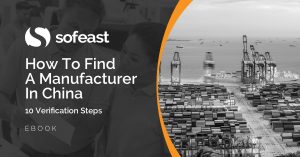I recently published a list of videos on the injection molding process, and importers of hard goods made from plastics (or at least using plastic components) also need to know how to test plastic material properties.
Why is plastic testing important? We’ll explore it in this post and leave you better equipped to manage your supply chain.
Testing plastic material properties to assure your suppliers are on course
Understanding testing plastic material properties is important knowledge because one of the most common questions we get from clients on this topic is, ‘how to make sure the factory used the type of plastic they promised to use?‘
Switching plastic types in production is a danger that importers face, as some Chinese suppliers take this type of freedom in order to cut their costs. There are several reasons why you need to stay on top of this:
- The plastic properties were chosen to fit with the intended use, and use environment, of the finished product.
- A mold is made for 1 type of plastic polymer. Change the plastic properties and the resulting product might have serious issues… or the mold can simply no longer be used!
A simple way of identifying what type of plastic was used is outlined in this article. Quite useful.
It is also important to confirm the properties of the plastic used. We made some videos on the way to test plastic materials, and I thought I’d share them here.
Checking density of polymer or finished products
This is often done during quality inspections, since measuring water displacement is not very complicated.
Checking hardness (or durometry), with the shore test or Rockwell test
This is a common test since shore meters are relatively inexpensive.
A safety hard hat is much harder than a gel shoe insole, for example.
Checking flexural strength (ability to resist deformation under load)
PI + glass fiber is much stronger than MDPE, for example.
Checking tensile strength (force required to elongate the material to its breaking point)
PLA ruptures much faster, but had higher tensile stress, than HDPE which elongated much more.
Impact test (resistance to impact from a hammer coming from one side)
Since manufacturers always have the temptation to use recycled resin (which leads to a product that breaks much more easily), this test is common.
It is also used to check if there are too many contaminants (fibers, metal pieces…), which make the part much easier to break.
For instance, LDPE is much stronger, in that sense, than PS. But also, a higher or lower temperature can change the results dramatically.
—-
I hope the information and videos help you to improve your control over your supply chain, and your plastic goods’ quality! What types of plastics are you currently using? Do you have any issues or questions about how to test plastic material properties, your suppliers, plastic types, or manufacturing right now? Leave me a comment and I’ll be happy to reply.
Are you wondering how to find a manufacturer in China who is well-suited to your needs and can also deliver on their promises?
Sofeast has developed 10 verification steps to help you find the right manufacturer. They’re shared in this FREE eBook: “How To Find A Manufacturer In China: 10 Verification Steps.”
It covers:
- Background checks
- Manufacturing capabilities
- Quality system auditing
- Engineering resources
- Pricing, negotiation, & contracts
- …and much, much more
Just hit the button below to get your copy:


